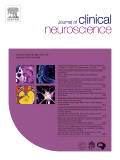
SPINE
Clinical outcome improved similarly with uni- and bilaterally instrumented MIS TLIF
J Clin Neurosci. 2014 Sep;21(9):1612-665 patients diagnosed with degenerative lumbar spine disease were randomized to either unilateral or bilateral pedicle screw insertion in minimally invasive transforaminal lumbar interbody fusion (MIS TLIF). The purpose of this study primarily was to compare clinical outcomes between the two instrumentation techniques from 6-18 months postoperatively. Oswestry Disability Index (ODI) and Visual Analog Scale (VAS) pain scores improved in both groups, with no significant difference between groups detected at any time point. Fusion rate and complications were also similar between groups.
Unlock the full ACE Report
You have access to {0} free articles per month.Click below to unlock and view this {1}
Unlock NowCritical appraisals of the latest, high-impact randomized controlled trials and systematic reviews in orthopaedics
Access to OrthoEvidence podcast content, including collaborations with the Journal of Bone and Joint Surgery, interviews with internationally recognized surgeons, and roundtable discussions on orthopaedic news and topics
Subscription to The Pulse, a twice-weekly evidence-based newsletter designed to help you make better clinical decisions
Exclusive access to original content articles, including in-house systematic reviews, and articles on health research methods and hot orthopaedic topics
Or upgrade today and gain access to all OrthoEvidence content for just $1.99 per week.
Already have an account? Log in


Subscribe to "The Pulse"
Evidence-Based Orthopaedics direct to your inbox.
{0} of {1} free articles
Become an OrthoEvidence Premium Member. Expand your perspective with high-quality evidence.
Upgrade Now












































































